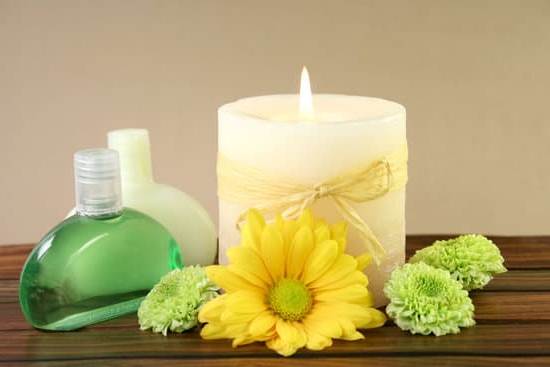Aromatherapy has been a practice that dates back centuries, tapping into the healing properties of essential oils to promote overall well-being. One key aspect of aromatherapy is understanding the composition of fragrances, which involves categorizing scents into top, middle, and base notes. These notes play a crucial role in creating balanced and effective aromatherapy blends that offer both therapeutic benefits and captivating aromas.
In aromatherapy, top notes are the first scents perceived when you inhale an essential oil blend. These lighter, more volatile oils evaporate quickly and provide initial freshness to a fragrance. Middle notes follow shortly after, adding complexity and depth to the aroma. They are often referred to as the heart of a scent, offering balance and harmony between the top and base notes. Base notes are the final layer of a fragrance, providing stability and longevity to the blend.
Understanding how each note interacts with one another is essential in creating synergistic aromatherapy blends that deliver both therapeutic effects and delightful scents. By harnessing the power of top, middle, and base notes, aromatherapists can tailor their blends to address specific needs or preferences. In the following sections, we will delve deeper into each category of notes, exploring their characteristics, examples of oils used for each note type, as well as their respective benefits and therapeutic properties.
Understanding the Concept of Top, Middle, and Base Notes in Aromatherapy
Aromatherapy utilizes the therapeutic benefits of essential oils to promote health and well-being. In order to create effective blends, it is crucial to understand the concept of top, middle, and base notes in aromatherapy. These categories refer to the volatility and evaporation rates of essential oils, which play a key role in determining the overall fragrance composition and therapeutic properties of a blend.
Top notes are the first scent that you perceive when smelling an aromatherapy blend. They are typically light, refreshing, and uplifting, providing an initial burst of aroma. Examples of top notes include citrus oils like lemon and bergamot. In aromatherapy, top notes are known for their invigorating and energizing effects on both the mind and body. They have a quick evaporation rate and can help to create a sense of freshness in blends.
Middle notes serve as the heart of an aromatherapy blend, providing balance and harmony between the top and base notes. These oils have a moderate evaporation rate and help to support emotional well-being. Common middle note essential oils include lavender, geranium, and rosemary.
In aromatherapy practice, middle notes are often used for their calming properties or to promote relaxation and stress relief. By incorporating middle notes into a blend, it can enhance the overall aromatic experience while adding depth to the scent profile.
Top Notes
Many top notes in aromatherapy have invigorating and stimulating properties that can help improve mood, sharpen focus, and increase mental clarity. These oils are often used in blends meant for uplifting purposes or to create a refreshing atmosphere in spaces like offices or living areas. In addition to their aromatic qualities, top notes can also serve as natural disinfectants due to their antibacterial properties. For example, lemon essential oil is known for its cleansing effects when diffused into the air.
When creating an aromatherapy blend, it is essential to balance the top notes with middle and base notes to ensure a harmonious overall scent profile. While top notes provide the initial aroma impact, they quickly give way to the more substantial middle and base notes that form the foundation of the blend.
By understanding how each type of note interacts with one another, you can create a well-rounded fragrance that offers both immediate gratification and long-lasting benefits. Experimenting with different combinations of top notes can help you personalize your blends according to your preferences and desired outcomes in aromatherapy practice.
Middle Notes
In aromatherapy, middle notes play a crucial role in creating well-rounded and balanced fragrance compositions. These notes are known for their moderate evaporation rate, which means they provide the body of the scent and help to harmonize both the top and base notes. Middle notes are also sometimes referred to as heart notes because they often represent the core or essence of a blend.
Common oils used as middle notes in aromatherapy include lavender, rosemary, geranium, and chamomile. These essential oils have distinct aromatic profiles that can evoke feelings of relaxation, balance, and emotional wellness. Middle notes are often chosen based on their therapeutic properties, which can vary from calming effects to promoting mental clarity.
The therapeutic properties of middle notes in aromatherapy blends can range from anti-inflammatory and analgesic effects to supporting emotional well-being and promoting relaxation. For example, lavender essential oil is commonly used as a middle note for its stress-relieving properties and ability to promote restful sleep. By incorporating middle notes into your aromatherapy practice, you can create synergistic blends that address both physical and emotional needs effectively.
- Lavender
- Rosemary
- Geranium
- Chamomile
Base Notes
When it comes to creating a harmonious and well-rounded aromatherapy blend, understanding the role of base notes is crucial. Base notes are the foundation of any fragrance composition and play a significant role in grounding the aromatic profile of an essential oil blend. These notes are typically rich, deep, and long-lasting, providing stability to the overall aroma.
Some common examples of base notes in aromatherapy include oils such as patchouli, cedarwood, vanilla, and sandalwood. These oils are known for their earthy, woody, and musky scents that can help create a sense of depth and complexity in an aromatherapy blend. In addition to their aromatic qualities, base notes also possess therapeutic properties that can promote relaxation, calmness, and emotional balance.
In aromatherapy practice, base notes are often used to anchor lighter top and middle notes, allowing the entire blend to unfold gradually over time. By incorporating base notes into your aromatherapy blends, you can create a well-rounded sensory experience that not only smells wonderful but also offers therapeutic benefits. Understanding how to balance top, middle, and base notes is essential for creating effective and harmonious aromatherapy blends tailored to specific needs or desired outcomes.
How to Create a Balanced Aromatherapy Blend Using Top, Middle, and Base Notes
Aromatherapy is the practice of using essential oils and aromatic compounds to promote holistic healing and well-being. One key aspect of creating effective aromatherapy blends lies in understanding the concept of top, middle, and base notes. These notes refer to the different components of a fragrance composition, each playing a unique role in the overall aroma profile and therapeutic properties of the blend.
Top Notes
Top notes are the first impression of an aromatherapy blend, characterized by their light, fresh, and uplifting scents. They are usually derived from citrus fruits or herbs like bergamot, lemon, or peppermint. Top notes evaporate quickly and provide an initial burst of fragrance when the blend is first applied. In terms of therapeutic benefits, top notes are known for their invigorating and mood-boosting effects.
Middle Notes
Middle notes form the heart of an aromatherapy blend, providing body and fullness to the overall scent profile. Common middle note oils include lavender, rosemary, and chamomile. These oils have a balancing effect on both the mind and body, promoting relaxation and emotional harmony. Middle notes serve as a bridge between the top and base notes, ensuring a smooth transition in fragrance development.
Base Notes
Base notes are the foundation of an aromatherapy blend, offering depth, richness, and longevity to the scent. Oils such as cedarwood, patchouli, or sandalwood are often used as base notes due to their grounding and calming properties. Base notes have a slow evaporation rate which helps anchor the entire blend over time.
They provide stability to the aroma profile while gradually revealing their complex undertones as they linger on the skin or in the air. By understanding how top, middle, and base notes work together harmoniously in aromatherapy blends, practitioners can create well-balanced formulations that not only smell delightful but also offer a wide range of therapeutic benefits for holistic healing.
Aromatherapy Recipes
Middle notes provide body and balance to aromatherapy blends. They form the heart of the fragrance and often have a calming or balancing effect on emotions. Oils such as lavender, rosemary, and chamomile are popular choices for middle notes due to their therapeutic properties. These oils act as connectors between the top and base notes, creating a cohesive aroma that is both pleasing and beneficial for mind and body.
Base notes are the foundation of an aromatherapy blend, offering depth and longevity to the overall scent. They tend to linger on the skin or in a room long after the volatile top notes have dissipated. Base notes are typically rich, warm, and grounding in nature.
Essential oils like patchouli, sandalwood, and cedarwood are commonly used as base notes in aromatherapy blends for their earthy and comforting characteristics. By understanding how these different layers interact with each other, you can create well-rounded aromatherapy recipes that cater to specific needs and preferences.
| Top Notes | Lemon Essential Oil |
|---|---|
| Middle Notes | Lavender essential oil |
| Base Notes | Patchouli essential oil |
Tips for Choosing the Right Balance of Top, Middle, and Base Notes in Aromatherapy Products
When it comes to creating an effective aromatherapy blend, understanding the balance of top, middle, and base notes is crucial. Each category of notes plays a specific role in the overall scent profile and therapeutic benefits of the blend. Top notes are the first impressions of a scent, middle notes provide body and fullness, while base notes offer depth and longevity to the aroma.
Top notes in aromatherapy are often light, fresh, and uplifting. They are usually fast-evaporating oils that create the initial impact of a blend. Some common examples of top notes include citrus oils like lemon and bergamot, as well as herbal oils like peppermint and eucalyptus. These oils can help to invigorate the mind, uplift the spirit, and promote mental clarity. When choosing top notes for your aromatherapy products, consider their vibrancy and ability to make a strong first impression.
Middle notes in aromatherapy provide the main body of a fragrance blend. They help to harmonize the top and base notes while adding complexity and richness to the overall aroma. Common middle note oils include lavender, geranium, rosemary, and chamomile.
These oils have balancing properties that can help calm the mind, soothe emotions, and support overall well-being. When selecting middle notes for your aromatherapy products, think about how they interact with both the top and base notes to create a cohesive scent profile that resonates with your desired purpose.
| Category | Examples |
|---|---|
| Top Notes | Lemon, Bergamot |
| Middle Notes | Lavender,Rosemary |
Conclusion
In conclusion, understanding the significance of top, middle, and base notes in aromatherapy is essential for creating well-balanced and effective blends. Top notes provide the initial impression of a fragrance with their light and uplifting characteristics, while middle notes form the heart of the scent with their harmonizing properties. Base notes anchor the blend and help slow down the evaporation rate, ensuring a longer-lasting aroma.
By incorporating a variety of essential oils from each category, aromatherapists can create complex and multi-dimensional blends that cater to specific needs and preferences. Whether seeking relaxation, balance, or energy enhancement, knowing how to combine top, middle, and base notes is key to achieving desired therapeutic effects in aromatherapy practice. Experimenting with different combinations and proportions allows practitioners to customize blends for various purposes such as stress relief, respiratory support, or mood enhancement.
In essence, mastering the art of harnessing the power of top, middle, and base notes in aromatherapy opens up a world of possibilities for creating unique and effective aromatic experiences. By paying attention to the characteristics, examples, and benefits of each category of oils, individuals can delve deeper into the realm of scent composition and explore endless opportunities for holistic well-being through fragrance therapy.
What are top middle and base notes in aromatherapy becomes not just a question but a guiding principle in crafting personalized blends for overall wellness.
Frequently Asked Questions
What Are Top Mid and Base Notes?
Top notes in a fragrance are the first scents that you notice upon application. They are light and evaporate quickly, making way for the middle notes to emerge. On the other hand, base notes are the foundation of a perfume, providing depth and longevity to the overall scent.
What Are the 3 Main Notes of Every Fragrance?
Every fragrance consists of three main notes: top, middle (or heart), and base notes. These three layers work together to create a well-balanced composition that evolves over time as you wear the fragrance.
The top note is what you smell first, followed by the middle note which forms the main body of the scent, and finally, the base note which lingers longest on your skin.
Is Lavender a Top Middle or Base Note?
Lavender is classified as a top note in many fragrances due to its fresh and uplifting aroma that is detected immediately upon application. However, lavender can also be found as a middle note in some perfumes, acting as a bridge between the lighter top notes and deeper base notes.
Its versatility allows lavender to be used at different stages of a fragrance composition.

Are you looking for a natural way to improve your health and wellbeing?
If so, aromatherapy may be the answer for you.




